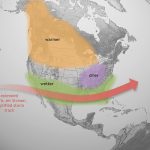Dry conditions to hurt rice, sugarcane and soybeans in India, wheat in Australia and rice and palm oil in Southeast Asia
SINGAPORE (Reuters) — An unusually dry August has taken a toll on cereal and oilseed crops in Asia as El Nino intensified, and forecasts for lower rainfall in September are further threatening to disrupt supplies. While wheat output forecasts are being revised lower because of dry weather in Australia, the world’s second largest exporter, record-low […] Read moreTag Archives El Nino — page 3

El Nino should benefit South American crops
South American crop production should benefit from the El Nino weather phenomenon that is expected to be in place through the northern hemisphere winter, says an analyst. It will be a welcome reprieve from three consecutive years of La Nina, especially in Argentina, which is still recovering from the worst drought in 60 years. “Their […] Read more

Return of El Nino and a warmer ocean bring uncertainty
Weather extremes in recent months have so far had limited impact on global crop production but the prospects for the coming year are uncertain as the world faces the return of El Nino, coupled with exceptionally warm ocean temperatures. El Nino and La Nina are the two ends of the Pacific Ocean oscillation and we […] Read more

Current transition to El Nino happening faster than normal
In the simplest terms, El Niño is when “surface waters in the eastern tropical Pacific… become warmer than average,” says the Environment Canada website.
“The changing pattern of the Pacific Ocean causes a shift in the atmospheric circulation, which then impacts weather patterns across much of the Earth.”

Fast transition could indicate a strong El Nino
El Niño is back. It could evolve into a strong and persistent El Niño weather pattern or it might be moderate and short lived — It’s too early to tell. However, some forecasters think it could become a powerful El Niño. “This El Niño seems to be developing very, very quickly,” said Barrie Bonsal, a […] Read more

Analysts struggle with El Niño precipitation predictions
Drought is unlikely but don’t expect a wet summer as world flips rapidly from a La Niña directly into an El Niño event
While it is difficult to predict El Niño’s influence on summer weather for most of North America, there is a strong correlation with temperature on the Canadian Prairies. It typically results in a hotter-than-normal summer, especially for the western half of the region, said John Baranick, DTN’s agricultural meteorologist. When it comes to precipitation, it […] Read more
Analysts struggle with El Nino rain predictions
While it is difficult to predict El Nino’s influence on summer weather for most of North America, there is a strong correlation with temperature on the Canadian Prairies. It typically results in a hotter-than-normal summer, especially for the western half of the region, said John Baranick, DTN’s agricultural meteorologist. When it comes to precipitation, it […] Read more

El Nino may not have much of an impact on wheat yields
Will an early El Nino impact Canadian spring wheat yields?

Return of El Nino does not bode well for Australian farmers
The transition from La Nina to El Nino and a shift to a positive Indian Ocean Dipole could mean much less rain Down Under
“El Nino typically suppresses rainfall in eastern Australia during the winter and spring months,” said the Australian Bureau of Meteorology in an April 11 Climate Driver Update.



